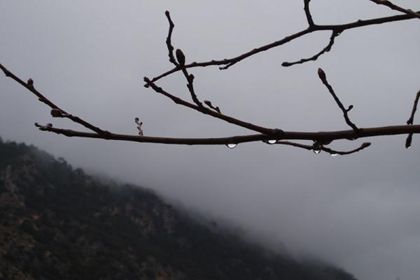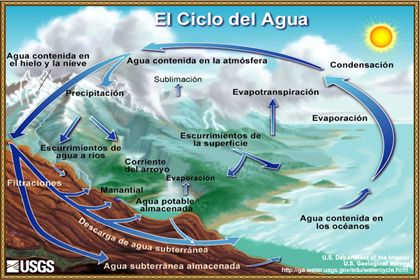The Water Cycle
The constant circulation of water on the Earth is called the Water Cycle.

The evaporation of the seawater provides humidity to the atmosphere where with the help of the air and the sun, clouds are formed. The evaporation from the ground and the transpiration of plants increase the humidity of the air and this water vapor, on cooling down, turns into mist, dew, frost and clouds and falls back down to earth in the form of rain, snow or hail stones.
formed. The evaporation from the ground and the transpiration of plants increase the humidity of the air and this water vapor, on cooling down, turns into mist, dew, frost and clouds and falls back down to earth in the form of rain, snow or hail stones.

This water falls to the earth and runs over or soaks into the ground. It washes down to the meadows and fields and waters the crops and the orchards. The water forms streams, rivers, lakes and reservoirs on the earth’s surface. It filters through cracks in the rocks to form the underground rivers and aquifers that supply our wells with water, and sometimes reappear on the surface in the form of springs.

Both surface and ground waters finally ends up back in the sea, process that, in the case of surface water, can take only a few days or, in the case of groundwater, as long a various centuries, and the water cycle starts again.
Man has an impact on the water cycle since the fresh water we use is returned polluted to the environment something that is putting life on this planet in grave danger.



 Castellano
Castellano  Valencià
Valencià  Deutsch
Deutsch  English (UK)
English (UK) 